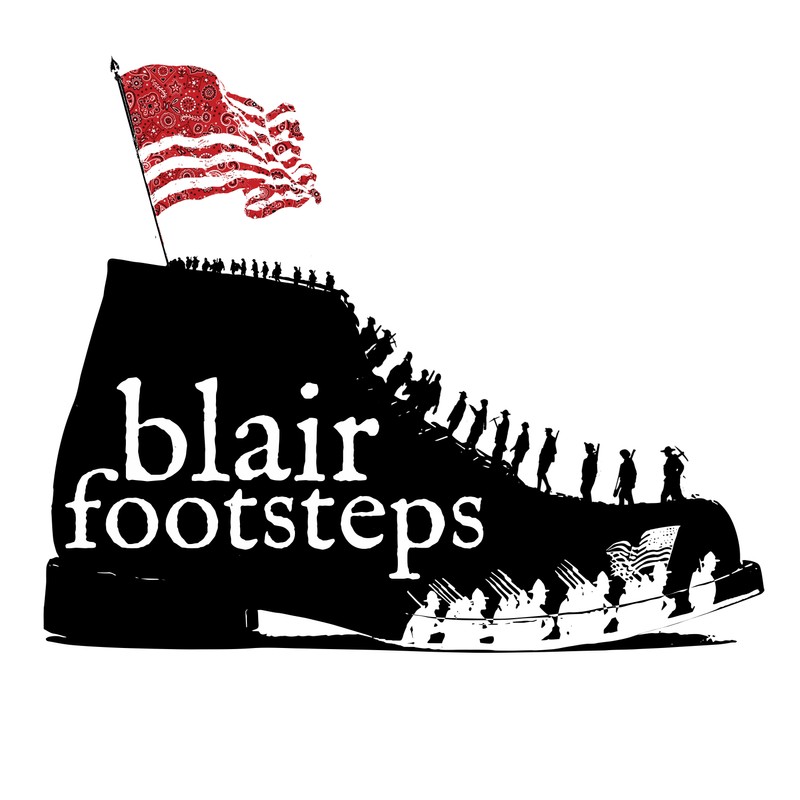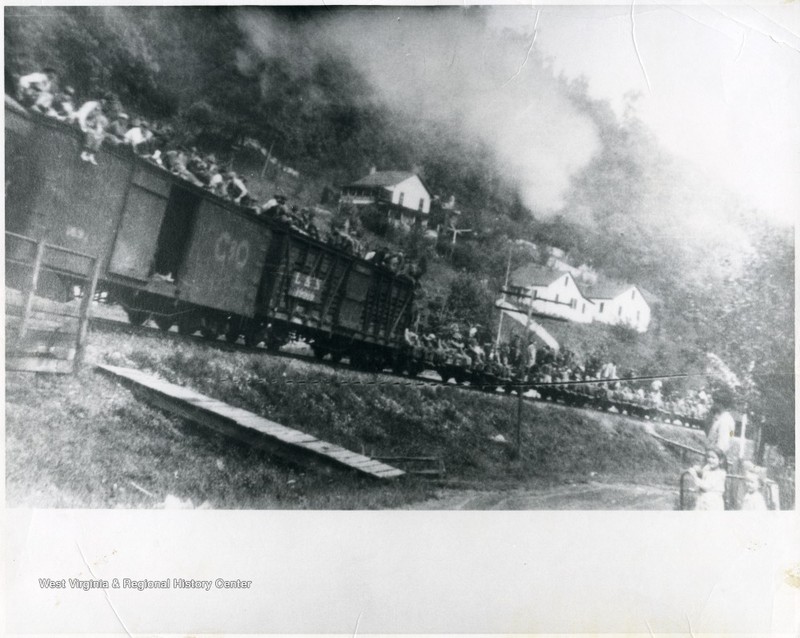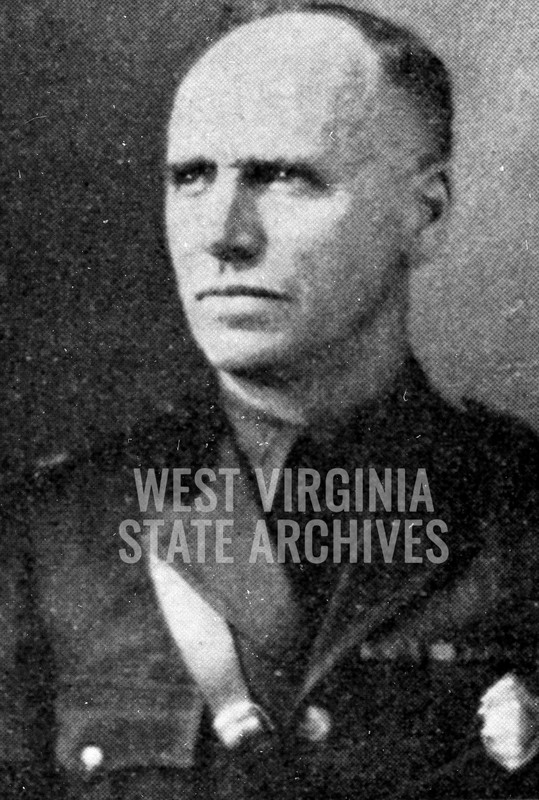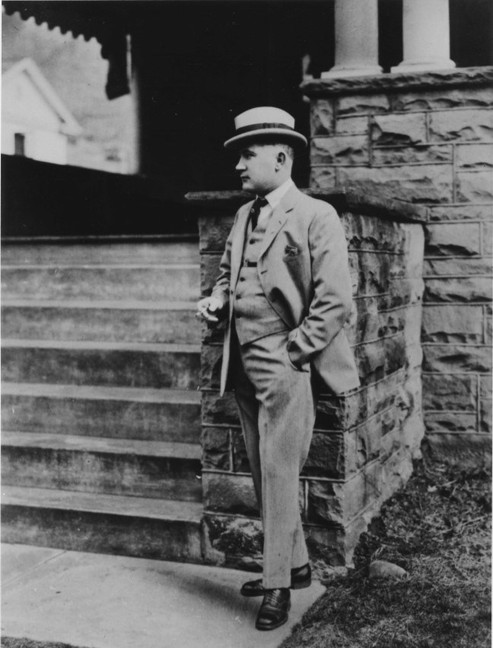Blair Footsteps Tour #4: Clothier
Introduction
Text-to-speech Audio
In late August and early September 1921, the mining towns of Clothier, Jeffrey, and Sharples became staging grounds for the advancing "Red Neck Army" of union miners as they closed in on the battleground at Blair Mountain. Hospitals, ammunition depots, and rest areas were set up to support the attacks on Sheriff Don Chafin's 3,000 "Logan Defenders" holding miles of entrenchments on Spruce Fork Ridge.
When the march nearly disbanded without a fight a few days before, on August 26, the impending conflict was reignited by a West Virginia State Police raid on union miners in Sharples. Miner Lewis White later seized a train at gunpoint in Clothier and had it driven to Madison, where he rounded up a number of miners and continued the advance on Logan.
------------------
This entry is a digital companion to the Blair Footsteps exhibit trail, available to the public from August 30 - September 11, 2021 as part of the Battle of Blair Mountain Centennial. The map location of this entry indicates where the temporary exhibit can be found. The Clothier Station of Blair Footsteps is located at the end of Coal Valley Road, just off of WV Highway 17, at the UMWA Local 2935 hall.
Images

A train rolls south through Ramage, loaded with miners headed for the fight.

WV State Police Captain James Brockus, who led the ill-fated raid on Sharples that reignited the miners' march.

Sheriff Don Chafin in front of his house in Logan. The house is listed on the National Register of Historic Places

Backstory and Context
Text-to-speech Audio
Long before human settlement, the Spruce Fork River cut a wide gap through the steep mountains of the Allegheny Plateau between its headwaters south of Blair Mountain and its mouth at the Little Coal River in Madison. When its prehistoric waters receded, the flatland at the bottom could be traversed comparatively easily compared to the steep slopes and dense mountains surrounding it. The winding twenty mile valley was also suitable for the railroad and had plenty of room for small towns to establish themselves. In the late summer of 1921 the miners’ army moved south through this valley on their way to Mingo County, their boots stirring up the dirt roads in towns like Ramage, Jeffrey, Clothier and Sharples.
Armed coal miners from across West Virginia (and even from some other states) had begun to gather near Marmet on the Kanawha River on August 20, 1921. The plan was to march south, break through anti-union defenses in Logan County and advance on Mingo County—to overturn martial law, free union miners and organizers from jail, and forcibly unionize the area so as to end a state of corporate serfdom in the company towns, where the company's will was the rule of law. But as the Red Neck Army amassed at Marmet, armed conflict in Logan County some forty miles to the south had already begun.
Increasingly apprehensive of union unrest, Logan County Sheriff Don Chafin asked the West Virginia State Police for assistance in early August, figuring that a public demonstration of strength would intimidate the discontented miners. A small detachment of state troopers rode into Clothier on horseback—the town lay close to the Boone County border, across which was mostly unionized territory—where ensued a tragicomic show of force: striding down Clothier's main street, a trooper accidentally ran his horse into a parked car. His companions pulled out the car's occupant and battered him for embarrassment them.
The incident was an uncomfortable reminder to locals that they were at the mercy of the same justice that had recently left Sid Hatfield and Ed Chambers riddled with bullets on the courthouse steps a couple of counties to the south. Word spread of the troopers’ unprovoked aggression, and volunteers assembled to march on Clothier and deal with the situation. The miners’ posse mistakenly fired on a passing car, and its panicked driver fled back to Logan to report the attack. Sheriff Chafin sent another contingent of West Virginia State Police over Spruce Fork Ridge to round up the vigilantes. The troopers were caught in a trap, unceremoniously disarmed, and sent back to Logan with their tails between their legs. Their defeat was a personal affront to both Sheriff Chafin and the State Police.
Though the miners' army had begun to march southward from Marmet on August 24-25, by the afternoon of Saturday, August 27, rumors reached the Spruce Fork Valley that the campaign was called off. A U.S. Army general had arrived in Charleston and convinced many to lower their arms and disperse. In Logan, Don Chafin even dismissed his defensive force, sending them home from the trenches. But word soon arrived that several hundred armed miners had continued their march, and were now gathered in Blair preparing to advance on Logan.
Alarmed, the Sheriff recalled his defenders and phoned Major Thomas B. Davis, the state's Adjutant General then enforcing martial law in Mingo County, to ask for more manpower. The Major obliged and sent West Virginia State Police Captain James R. Brockus and a contingent of troopers. Brockus proved to be an incendiary choice, known for his aggressive tactics and a brutal raid on a striking miners' tent colony at Lick Creek earlier that year. On Chafin's orders, Brockus's men moved toward Clothier to arrest the miners who had disarmed state troopers a fortnight before—an ill-timed act of petty vengeance. It proved disastrous.
Brockus and his men, arriving as night fell, started a gunfight with miners on the outskirts of Sharples. The deputies used several captured miners as human shields. Two of the hapless hostages were killed and one wounded in the fracas, but Brockus's men were scattered in the gunfire, and four were later rounded up and captured by the miners.
News of this breach of the fragile peace spread like wildfire through the hills and hollows. Miners who had given up the fight at the behest of Brigadier General Bandholtz rearmed and hurried toward Logan. Governor Morgan begged Washington for military support to halt the miners' advance. President Harding demurred, but also issued a proclamation that the miners must withdraw from the area immediately, then ordered General Bandholtz back to West Virginia to ensure his proclamation was obeyed.
Chafin and Brockus's retaliation reopened the floodgates that General Bandholtz and UMWA officials had carefully closed just hours before. Miners who had returned to their homes rearmed and rushed back to the battleground. The Little Coal Valley became a hotbed of activity as miners raced south on foot, and commandeered trains, automobiles and horse-drawn wagons. The march to Mingo was back on, but Logan and Sheriff Don Chafin stood in their way. A battle was in the making.
Sources
Green, James. The Devil Is Here in These Hills. Edition First. New York, New York. Atlantic Monthly Press, 2015.
Lee, Howard B.. Bloodletting in Appalachia: The Story of West Virginia's Four Major Mine Wars And Other Thrilling Incidents On Its Coal Fields. Parsons, West Virginia. McClain Printing Company, 1969.
Savage, Lon. Thunder in the Mountains: The West Virginia Mine War, 1920-1921. Pittsburgh, Pennsylvania . University of Pittsburgh Press, 1990.
Shogan, Robert. The Battle of Blair Mountain: The Story of America's Largest Labor Uprising. Boulder, Colorado. Westview Press, 2004.
West Virginia & Regional History Collection
West Virginia State Archives
NPS, https://www.nps.gov/articles/000/sheriff-don-chafin.htm
